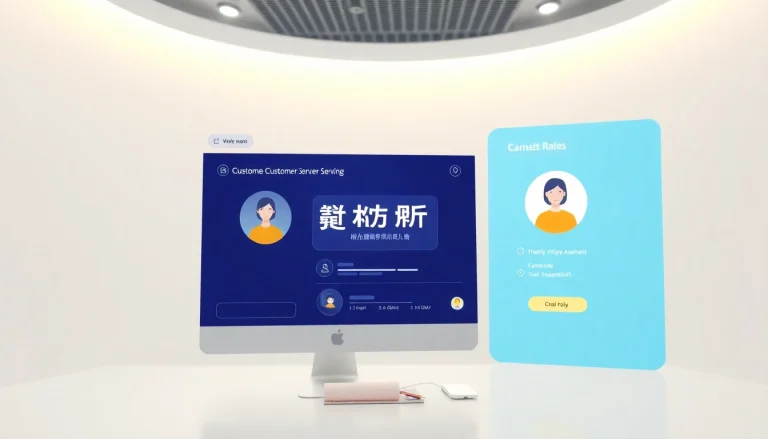
Understanding Competitive Intelligence
Definition of Competitive Intelligence
Competitive intelligence (CI) refers to the systematic process of gathering, analyzing, and disseminating information about competitors, market trends, and the overall business environment to help organizations make informed decisions. According to the Competitive intelligence definition provided by various experts, it encompasses not only the collection of data but also the interpretation of that data to derive actionable insights that can shape strategic planning.
The practice goes beyond mere surveillance. It involves using ethical methods to collect information from existing public sources, competitor announcements, and industry reports to predict market movements and competitors’ actions. By utilizing CI, organizations can identify opportunities for innovation, anticipate shifts in market conditions, and craft strategies that can enhance their competitive position.
Importance for Business Strategy
The significance of competitive intelligence in developing a robust business strategy cannot be overstated. With the business landscape constantly evolving, companies must stay vigilant to remain competitive. CI helps businesses to:
- Understand market dynamics and the competitive landscape.
- Identify consumer needs and market gaps.
- Anticipate competitor moves and strategically respond.
- Inform product development and marketing strategies with data-backed insights.
- Engage stakeholders with well-rounded, intelligence-driven proposals.
In a world where information is abundant, leveraging competitive intelligence allows organizations to turn data into actionable strategies, ultimately leading to more informed business decisions.
Common Misconceptions
Despite its importance, several misconceptions surround competitive intelligence. Often misunderstood as synonymous with corporate espionage, competitive intelligence is distinctly different. It relies on ethical practices and publicly available information rather than illicit methods. Other common misconceptions include:
- CI is solely the responsibility of marketing teams—while marketing heavily utilizes CI, it is a cross-departmental effort involving product development, sales, and strategy teams.
- CI is all about spying on competitors—its true essence is about understanding market conditions and customer behavior to refine one’s own business strategy, not just monitoring competitors.
- The data gathered is often overwhelming—without the right analysis and tools, vast amounts of data can seem unmanageable; however, targeted data collection and analysis techniques can distill this information into meaningful insights.
Key Components of Competitive Intelligence
Data Collection Methods
Effective competitive intelligence begins with robust data collection methods. These methods can be broadly categorized into primary and secondary sources:
Primary Sources
This involves original data collection tailored to specific research objectives. Techniques include:
- Surveys and Interviews: Direct engagement with customers and industry experts can yield insights related to market demand and preferences.
- Focus Groups: Gathering small groups for discussion can uncover deep qualitative insights into consumer attitudes.
- Field Trials: Testing products or campaigns in limited areas to assess performance before wider rollout.
Secondary Sources
Secondary sources pull information from reporting and studies already published. Common secondary sources include:
- Industry Reports: Publications from market analysts provide essential data on competitor performance and market trends.
- Social Media and Online Reviews: Monitoring these platforms helps organizations understand consumer sentiment and competitor positioning.
- Trade Publications: Insights from industry-specific publications can inform businesses about novel developments and strategies in their sector.
Analysis Techniques
The value of competitive intelligence lies not just in the quantity of data collected but in the analytical techniques applied to derive insights. Common analysis methods include:
- SWOT Analysis: A strategic planning tool that evaluates Strengths, Weaknesses, Opportunities, and Threats, to assess a company’s strategic position relative to its competitors.
- Porter’s Five Forces: This model analyzes the competitive forces within an industry, helping to identify market attractiveness and potential profitability.
- Benchmarking: Comparing a company’s performance metrics with chosen competitors to identify areas for improvement.
By employing these analysis techniques, businesses can transform raw data into actionable strategies.
Utilizing Collected Data
Once data has been collected and analyzed, the next critical step is utilizing this information effectively. This can be done in several ways:
- Strategic Planning: Incorporating insights gained through CI into long-term strategic goals.
- Product Development: Utilizing market intelligence to guide innovation, ensuring products meet market demand.
- Marketing Strategies: Tailoring marketing initiatives based on customer intelligence, improving engagement and conversion rates.
Ultimately, effectively utilizing competitive intelligence ensures that businesses align their operations with real-time market conditions, maximizing their strategic advantages.
Types of Competitive Intelligence
Market Intelligence
Market intelligence is focused on understanding market trends, sizes, and competitive positioning. Businesses gather data related to:
- Market Size and Growth: Estimating the market potential and identifying growth opportunities.
- Market Segmentation: Understanding different customer demographics and tailoring strategies accordingly.
- Competitive Landscape: Identifying who the competitors are and their strengths and weaknesses.
Utilizing market intelligence helps businesses anticipate industry shifts and respond proactively.
Product Intelligence
Product intelligence involves analyzing competitors’ products in the marketplace to understand their offerings better. It encompasses:
- Feature Comparison: Comparing product features to find competitive advantages and identify gaps.
- Pricing Strategies: Examining how competitors price their products and adjusting strategies to maximize profitability.
- Customer Feedback: Gathering insights into consumer preferences and perceptions of competitive products.
Through product intelligence, companies can refine their products based on competitive benchmarks and better meet customer expectations.
Customer Intelligence
Understanding customers is vital for any business. Customer intelligence focuses on gathering insights about consumer behavior and preferences. Key components include:
- Customer Satisfaction Surveys: Surveying customers to gauge satisfaction and gathering feedback for improvement.
- Purchase Behavior Analysis: Tracking buying patterns to forecast future purchasing behavior.
- Brand Perception Studies:Examining how customers perceive your brand in relation to competitors.
Customer intelligence ensures that businesses can create strong, tailored marketing strategies to effectively engage their target audience.
Implementing a Competitive Intelligence Strategy
Steps to Develop a CI Program
To effectively implement competitive intelligence, businesses must create a structured CI program. Key steps involve:
- Define Objectives: Clearly outline what the business aims to achieve with CI—whether to understand competitors, identify market opportunities, or improve customer retention.
- Establish a CI Team: Create a team responsible for gathering and analyzing data. Ensure cross-departmental collaboration for diverse insights.
- Identify Information Sources: Determine where valuable information can be sourced, using both primary and secondary methods as described earlier.
- Develop Analysis Frameworks: Choose appropriate analytical tools and frameworks, such as SWOT or Porter’s Five Forces, that align with business objectives.
- Disseminate Insights: Ensure findings are effectively communicated to relevant stakeholders for optimal decision-making.
Tools and Resources for CI
Several tools can enhance the efficiency and effectiveness of CI programs, including:
- SEMrush: A comprehensive online visibility management platform for CI that enables businesses to analyze their online presence and competitor strategies.
- Crimson Hexagon: A powerful tool that provides valuable AI-driven insights from consumer discussions on social media.
- SimilarWeb: Offers analytics for web traffic, helping businesses understand their competitive landscape better.
Leveraging the right tools not only saves time but also improves the accuracy and depth of CI efforts.
Case Studies of Successful Implementation
Examining real-world examples exemplifies how organizations leverage competitive intelligence successfully:
- Starbucks: Leveraged CI to analyze customer preferences and socio-economic trends, leading to new product offerings and marketing campaigns that resonated with diverse demographics.
- Netflix: Utilized viewer data and competitive insights, allowing them to personalize recommendations and create original content tailored to their audience’s desires.
Such case studies illustrate how effective CI can significantly drive business growth and innovation.
Measuring Success in Competitive Intelligence
Key Performance Indicators
To assess the effectiveness of a CI program, businesses must establish key performance indicators (KPIs) related to the CI objectives. Common KPIs include:
- Market Share Growth: Analyze changes in market share as a direct result of insights gained from CI.
- Customer Retention Rates: Monitor the impact of CI efforts in addressing customer needs and improving loyalty.
- New Product Success Rates: Evaluate the performance of new products and services introduced as a result of CI insights.
Adjusting Strategies Based on Insights
Regular feedback loops should ensure that CI insights lead to actionable changes in strategy. This can include:
- Revisiting Strategic Plans: Based on newly acquired intelligence, revising strategic plans to better align with market conditions.
- Adjusting Marketing Campaigns: Tailoring campaigns according to the evolving preferences highlighted by customer intelligence.
- Product Modifications: Implementing changes to existing product lines to meet the identified demands of consumers.
Future Trends in Competitive Intelligence
The future of competitive intelligence will be influenced by emerging technologies and changing market dynamics. Significant trends include:
- Increased Use of AI and Machine Learning: Automating data collection and analysis to derive faster, more substantial insights.
- Real-Time Data Analytics: The demand for real-time insights will shape CI efforts, enabling companies to respond instantly to market changes.
- Focus on Ethical CI Practices: As scrutiny of data collection methods increases, companies will need to ensure compliance with privacy and ethical standards in their CI efforts.
Staying ahead of these trends will ensure that businesses continue to leverage competitive intelligence as a critical driver of sustained success.






